#unmarked sources are official artwork ^^..
Explore tagged Tumblr posts
Text
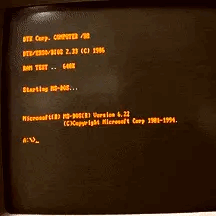

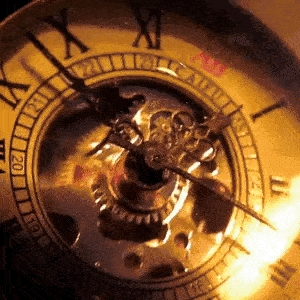



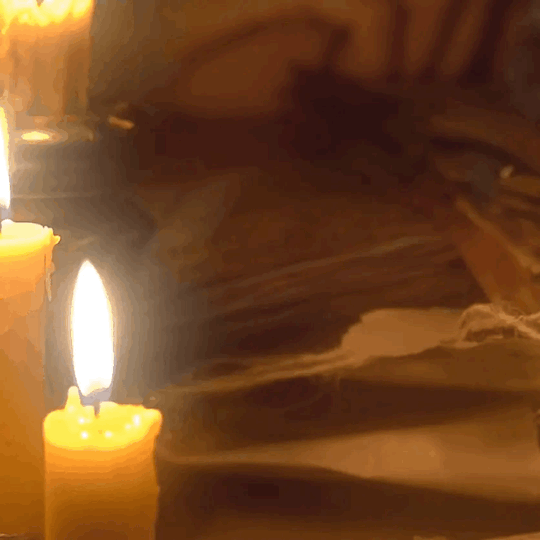
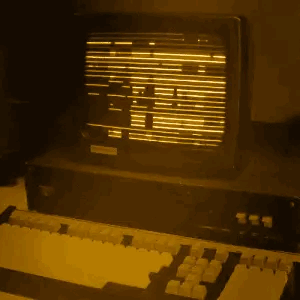
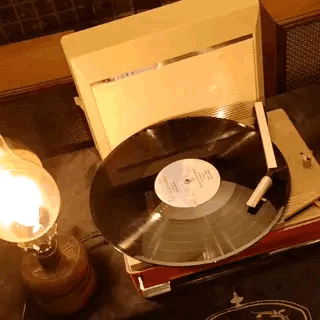
>> naomi kennedy stimboard
x / x / x
x / x / x
x / x / x
#unmarked sources are official artwork ^^..#everyone ever read tkp right now#actually maybe dont if i saw someone violently misinterpreting my faves id have to hit them with a shovel#tabbykat's playground#tkp#naomi kennedy#stimboard#visual stim#gif#cc tag#hymn.gif
6 notes
·
View notes
Text
Lies
Chung Hyun Joo
In unmarked graves some still lie. / the result are the same? Don’t lie! -Twin May Stories-
Under the authoritarian regime of dictatorships, some historical facts, such as massacres, might be considered socially false by deliberate cover-ups. Here, the interpretation determined by the regime is grounds for an argument to cover up any such case and is used to pressure victims politically so they could not testify. With the denial that the memories are not true, such incidents will only be haunting the survivors as seditious memories.
Through Twin May Stories, Chang Yoong Chia(章永佳), as an artist, tries to talk about his memories of the May 13 incident in Malaysia. This article examines the process of the appearance of the trauma that he inherited from his parents’ generation in his drawings, and his critical thoughts on May 13. To do this, one must first take a brief look at the incident, which is the background of Chang Yoong Chia’s work, and articles 152 and 115 of the Malaysian Constitution on the ‘special status of the Malays’ which is a critical trigger in the May 13 incident.
1. May 13. 1969. Kuala Lumpur.
On May 13, 1969, a bloody conflict broke out between the Malaysian Chinese and Malay peoples in Kuala Lumpur. The incident is said to have resulted from accidental clashes between them during a parade to celebrate the improved results in the May 10 general elections of political opposition parties whose main supporters are Malaysian Chinese. Consequently, rioting, looting, and arson broke out in downtown Kuala Lumpur and nearby areas. Because of this, the state declared a nationwide emergency and imposed a curfew.
According to the Government official’s tally at the time, there were 196 deaths, 439 injured and 753 cases of looting and vehicle arson, respectively. Among them, the Malaysian Chinese death toll was 143, and looting and arson were also known to have occurred mainly in their residential areas. However, according to unofficial statistics from Western diplomatic sources, the toll was closer to 600 with most of the victims being Malaysian Chinese.
After the incident, the National Operations Council (NOC) presented the report, The May 13 Tragedy, a Report by the National Operations Council on October 9, 1969. It cited the Malaysian Chinese-based opposition party’s provocations during its victory celebration in the May 10 general elections, violent acts by Chinese secret organizations, and maneuvers by Chinese Communists as the main reasons for the incident, primarily pointing to incitement and unbridled “ethnic communal politics” by Malaysian Chinese politicians. Since the report was written from the perspective of the ruling government, it states that the cause of the racial riot is entirely due to Malaysian Chinese inflammatory actions. It does not mention that police and troops, mostly Malay, have fired at the Chinese community and wrongfully carried out killings, looting, or mass arrests.
The Report describes the issue of the 1969 election and its political interests that moved many Malaysian Chinese as the primary cause of the national disturbances If one looks closely at this content, one can see that Malaysian Chinese politicians vehemently opposed Article 152 and Article 153 of the Constitution that were stipulated in the colonial period and aimed to secure the special status and superiority of political and cultural aspects for ethnic Malays. In other words, in the 1969 election, the Malaysian Chinese-based opposition party advocated for the ‘equality’ of the ethnic groups that constitute Malaysia. Its argument was based on a political awareness of how to define ‘rights’ as citizens beyond their ethnicity.
In the process of political provocations, this awareness seems to have been obstructed and made ambiguous by the Malaysian Chinese people’s complex ethnic identities and understanding. One can read and infer from this report that the Malays regarded Malaysian Chinese claims and actions as a serious threat to their privilege as indigenous people. Also, many complicated political situations seem to have instigated the Malays to feel anxious about the future and moved to act against the threat of the immigrant ethnicities.
The ruling regime strongly suppressed Chinese political demands and the ensuing ethnic conflicts that broke out, defining them as racial riots. One year later, it implemented the Bumiputra policy, which extended the Malays’ special status. It set out to institutionalize the discrimination between the right of two distinct groups, that of the Bumiputra, the Malaysian indigenous people, and non-Bumiputra, that is the immigrants. This meant that the construction of the political and social system, in which the latter’s rights are limited before the rights of the former, was intensified. The political agenda of the election in 1969 was a call for equality among the peoples as a nation. However, as a result of the bloody conflict between ethnic groups by political interests, the Bumiputera, which systematically reinforces the privileges of the indigenous people, begins. This suggests that China’s political attempts have ended in total failure.
The Malaysian government has discourage investigations and researches to clarify the actual conditions and causes of May 13. The official data conveying the circumstances and causes of the riot to the next generation is limited to The Report proposed by the National Operations Council at the time. While the interpretation decided by the public authority was politically used as grounds for the justification of the Bumiputra and the system supporting it, it was not allowed to raise any objection to the interpretation itself. As many of the witnesses who went through May 13 have passed away due to advanced age, nothing has been identified about the actual conditions of the riot officially, and the memories of the incident have been, as if, sealed and forbidden from being talked it.
May 13 is an important watershed that has brought about changes in Malaysia’s political and social system. Still, the case is surrounded by many suspicions. According to Kua Kia Soong, many people in Malaysia are questioning the government’s official interpretation of the racial riot. However, since they do not know the full truth about it, they continuously feel afraid of the ghost of “May 13 incident”, which the government ruling party cites as their logic of justification whenever it has a chance. This ghost is the logic of the authoritative system. It causes many people a psychological state of fear and misery and has been deeply rooted in them, especially Malaysian Chinese people such as Chang Yoong Chia.
2. The memories with an uneasy irrational fear
In the Twin May Stories, two small birds talk about the two incidents in May. Here, May 18 serves as momentum for dialogue of the birds to reveal Chang Yoong Chia’s inherited memories of May 13.
May 13 was a tragedy before his birth. His memories of it, along with constant warnings from the government Don’t Spread Rumours, were passed down to Chang Yoong Chia through the secret stories of his parents’ generation, and at the same time, the trauma was inherited. He describes this as “a bomb that may never explode on [him]” or “an uneasy irrational fear” that he has felt whenever he was urged to forget the memories that cannot be forgotten because they were a “bad thing.” These memories and fears are the ones he has kept hidden unconsciously in his artworks so far.
In Twin May Stories, birds are a medium that speaks for the unforgettable memories. At the same time, a bird’s figure is carved on the soles of shoes and is a sequence of shoe prints taken repeatedly, lined up in horizontal rows on a drawing pad that unfolds like an accordion. These ambiguous figures are a direct reminder of many people’s march in May and the harrowing and chaotic footprints left behind after sudden bloodshed swept through. Delicate drawings along the shoe prints weave visually an epic about many of those killed in the incidents. The birds are both those who participated in the march as well as witnesses to the incidents, or Chang Yoong Chia who inherited their memories.
Birds talk about the May incidents. One bird says “Many people died” and “In unmarked graves, some still lie” about the incidents in Gwangju and Kuala Lumpur because the other bird is not aware of them. The bird’s words indirectly remind us of the disastrous consequences of violence and armed suppression on both May 18 and May 13 but become dismissed as a lie by another bird immediately. In other words, it is testimony that some still lie is in society.
In Malaysia, every individual’s message about May 13 became an openly fabricated lie and was politically forced to be keep silent, with the widely-banded slogans and even the postmarks “Don’t Spread Rumours” and “Don’t Listen to Rumours.” The testimony of all survivors cannot yet be made real.
Chang Yoong Chia faces strong doubts, socially raised against his words, which imbrue his experience and inherited memories with unjust and disturbing things. He cannot talk about his memories anywhere. Individual suffering arises from social order caused by the logic of the authoritative system or is accompanied by the lethargic isolation felt when our fundamental rights are forfeited. Where is the lie?
The parrot’s words comparing the two incidents expose specifically the inner soul of the artist himself who has to lie at certain moments. “Your mouths speak freely” for May in Gwangju, unlike “we are forced to eat lice and other forms of invertebrates from this can of worms.”
The situation that he “still has to lie” because his experience and voice are suspected of being disturbing to social belief is like eating something inedible, or dirty and dishonorable. A lie is a ‘wrong word’ that is clearly against social relations and a deception that erodes his being in itself as a social being. “So slowly, little by little, we become invertebrates ourselves.” He reveals his inner anxiety and anger that he suppressed for a long time. The seditious memories, the ghosts, exist like this.
3. a Recollection of May 13, or truth
“Let me tell you the incident in May.” The little bird tells the other bird again. Its comparisons are simple. The two marches are the same in that a large number of people were killed and the survivors were forced to keep silent about their memories, but one has finally been able to talk about the truth, while the other is still buried.
The contents of the conversation did not change. The voice of the small bird is considered to be a lie because state power or authority monopolizes the historical narrative. Nothing has changed.
It is the word ‘truth’ that has an amplitude. By referring to the truth, he simply asks if the memory of many deaths can be a denial like that. May 13 and May 18 are essentially the same in the sense of unfinished attempts to bring social transformation but both ended in tragedies, in the sense that the memories of the witnesses were perpetually denounced as falsehoods. As in the case of South Korea’s National Security Law, the logic of defending the regime in the dictatorship continuously reproduced lies. In such a society, memories of a tragedy are considered as lies. If the problem of the systemic logic causes the lies, not the individual’s, then what is needed is action to change the underlying logic.
Chang Yoong Chia’s challenge to the matter of truth is cautious but determining. He calls for attention to the historical facts that hold many suspicions. The lie can only go beyond the logic of the regime only when it’s possible for the victims to explain and prove the development and damage of the situation, and then, at last, what was happening at that time can become apparent. His recollection of May 13 is an action to change the regime’s political logic.
Furthermore, ‘talking’ about the hidden historical facts under the authoritarian regime is to overcome the ghost that permeates within himself. This action requires much courage. Such courage comes from our fundamental minds that seek the truth. “Our blood is red. Our courage is white and as sure as the sky is blue.”
In Twin May Stories, Chang Yoong Chia attempts to make minimal changes to the social memories of May 13. Although the attempt will only confirm differences of opinion between ethnic groups such as the Malaysian Chinese and the native Malays, it drives his strong hope of “What is now false will in future be true.”
Finally, another bird asks again. “Oh, really?” This reaction is a simple change of the bird that flatly denied it was a lie. The regime’s political logic is momentarily powerless here.
In Twin May Stories, the artist’s hope resides here. Social changes are his hope that his inherited memories will not be dismissed as lies, and that memories, wandering like restless ghosts, will be able to be accepted as facts. Can the regime’s political logic or social logic change? The future is unpredictable, and we can only act according to ‘hope.’
What his artworks awaken is the hope to know the truth that sleeps in us. The act of art triggers our actions to march in step with others. The marchings are not over yet.

0 notes
Text
Former Malaysian PM held over graft probe
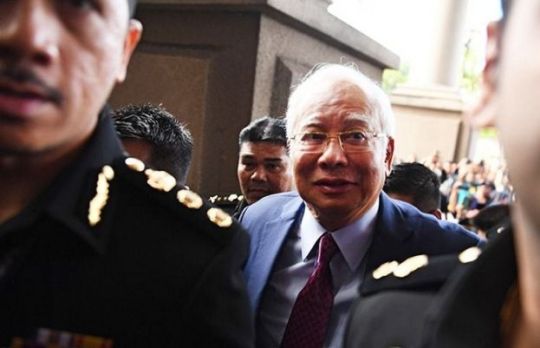
Former Malaysian prime minister Najib Razak was arrested by anti-corruption investigators on Tuesday, officials said, the latest dramatic development in a widening graft probe that has engulfed the ex-leader.
Najib, 64, will be charged on Wednesday, a taskforce set up to probe wrongdoing at state fund 1MDB said in a statement, adding he was apprehended at his home.
The arrest is the latest in a series of stunning moves by investigators that suggest the legal noose is tightening around Najib, his family and many of his close political and business allies.
Malaysia’s official news agency Bernama said the former premier is expected to face more than 10 counts of committing criminal breach of trust linked to SRC International Sdn Bhd, an energy company that was originally a subsidiary of 1MDB.
According to an investigation by the Wall Street Journal, $10.6 million originating from SRC was transferred to Najib’s personal bank accounts, just one small part of hundreds of millions of dollars from 1MDB that allegedly ended up in his accounts.
Najib had been summoned twice by the Malaysian Anti-Corruption Commission (MACC) over its investigation into a case related to SRC.
The newly-appointed attorney general Tommy Thomas would lead the prosecution team, according to Bernama.
Allegations of massive corruption were a major factor behind the shocking defeat to Najib’s long-ruling coalition in May elction by his former mentor Mahathir Mohamad-led reformist alliance.
Najib and his cronies were accused of plundering billions of dollars from the 1MDB sovereign wealth fund to buy everything from US real estate to artworks.
Najib and the 1MDB sovereign wealth fund deny any wrongdoing.
Since the election loss Najib has been banned from leaving the country and has found himself at the centre of a widening graft probe.
Shortly after his ouster, a vast trove of valuables was seized in raids on properties linked to Najib and his family, including cash, jewellery and luxury handbags, worth up to $273 million.
He and his luxury-loving wife Rosmah Mansor were questioned by investigators, as were his stepson Riza Aziz, whose firm produced the hit 2013 movie “The Wolf of Wall Street”, and his former deputy Zahid Hamidi.
A special government task force investigating the 1MDB corruption scandal said it froze 408 bank accounts containing a total 1.1 billion ringgit ($272 million) last week.
Local media reports said some of the accounts belonged to Najib’s political party, the once-powerful United Malays National Organisation. Until their shock ingdefeat in May, Najib’s party and its coalition allies had run Malaysia for six decades.
Sprawling mansion
A security source told AFP that agents from the MACC arrested Najib at his home, a sprawling mansion in a well-heeled suburb of Kuala Lumpur.
“They came in three to four unmarked cars,” said a senior security official familiar with the arrest.
A spokeswoman for MACC told AFP the former leader was brought to the commission’s headquarters in the administrative capital Putrajaya outside Kuala Lumpur.
Najib would stay there overnight and be brought to court on Wednesday, she added.
The US Justice Department, which is seeking to recover items allegedly bought with stolen 1MDB cash in America, estimates that $4.5 billion in total was looted from 1MDB.
Veteran legislator Lim Kit Siang, whose party is a member of the current ruling coalition, said Najib’s arrest had been expected.
“Najib has to answer the allegations. It is long delayed as the scandal has turned Malaysia into a global kleptocracy country,” he told AFP.
Hamidi, Najib’s former deputy, said: “I respect the rule of law... Let the rule of law take place.”
Read More
0 notes